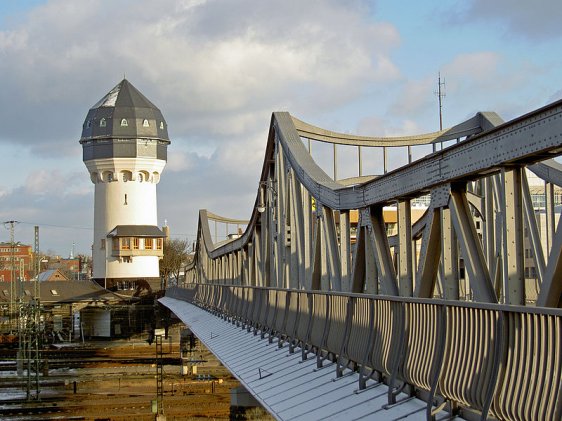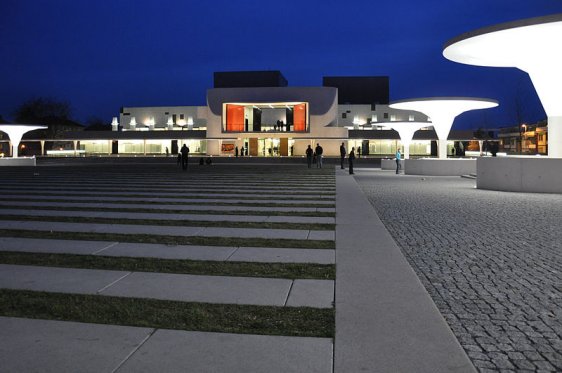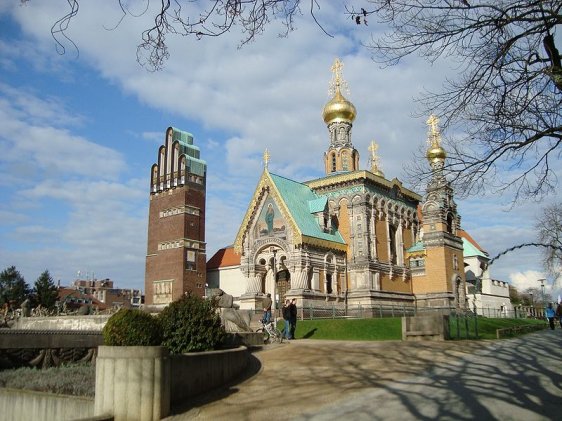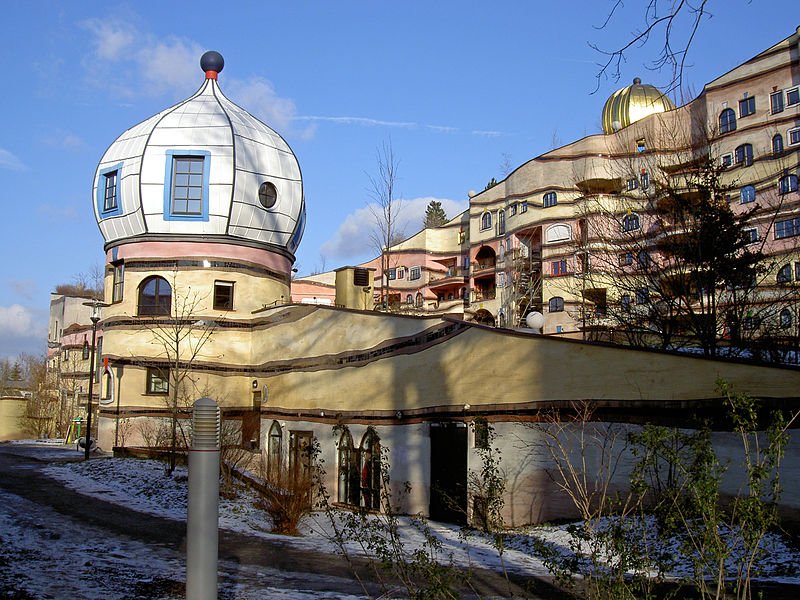 Darmstadt, Germany
Darmstadt, GermanySource: https://commons.wikimedia.org/wiki/File:Panorama_Darmstadt.jpg
Author: LSDSL

Darmstadt is a city in the southern part of the Rhine-Main area, within the state of Hesse, Germany. Located at an average elevation of 144 m (472 ft), Darmstadt covers 122.23 sq km (47.19 sq mi) and has a population of 144,000. It is within the Central European Time Zone (UTC+1) and in summer the Central European Summer Time Zone (UTC+2).
Unlike most cities in Germany, it is not near any particular body of water (river, lake or coastline), which is surprising for a city of its size. The area around Darmstadt is also not fertile, and not suitable for farming, so it is a wonder that the city was founded at all.
 Dornheimer Bridge and water tower, Darmstadt
Dornheimer Bridge and water tower, DarmstadtSource: https://commons.wikimedia.org/wiki/File:Darmstadt-Wasserturm-2.jpg
Author: Heidas

The history of Darmstadt goes back to the end of the 11th century. The name Darmstadt, as it is spelled today, means - of all things - "intestine city". This rather unflattering name had a more decent origin, for in the beginning it was Darmundestat, but over the centuries, evolved through misspelling, to arrive at this unfortunate meaning.
Darmstadt was made a city in 1330. At that time, the area was under the Holy Roman Empire, and the city (spelled Darmstait) was ruled by the counts of Katzenelnbogen. Darmstadt passed through various ruling dynasties to be eventually ruled by the Grand Dukes of Hesse.
 View of Georg-Büchner-Platz and the Staatstheater, Darmstadt
View of Georg-Büchner-Platz and the Staatstheater, DarmstadtSource: https://commons.wikimedia.org/wiki/File:Darmstadt_Georg-B%C3%BCchner-Platz_05.jpg
Author: Andreas Pradfcke

Darmstadt was one of the cities in Germany that became an important center for Jugendstil, the German response to Art Nouveau. This translates into the construction of many Jugendstil buildings in the early 20th century, many of which regarded as architectural treasures today.
Darmstadt holds the dubious distinction of being the first German city to systematically discriminate its Jewish population, as soon as the Nazis won power in the country. By the end of the Second World War, up to 3,000 Jews in Darmstadt have lost their lives in concentration camps.
 Russian Orthodox Church of St. Mary Magdelene, Darmstadt
Russian Orthodox Church of St. Mary Magdelene, DarmstadtSource: https://commons.wikimedia.org/wiki/File:Mathildenhohe.jpg
Author: Mstrydom

The Old Town of Darmstadt suffered heavy destruction from British bombings on 30 July 1940 and 11 September 1944. Over ten thousand people lost their lives in the attack, and another 70,000 or so were rendered homeless.
After the war, Darmstadt rebuilt and reinvented itself, to become a home for research institutes and high-tech companies. Its proximity to Frankfurt Airport works to its advantage, and helps it to derive opportunities in a wide range of economic activities including chemistry, pharmacy, information technology, biotechnology, telecommunications, mechatronics and spacecraft operations - for the European Space Operations Centre.
 Waldspirale, Darmstadt
Waldspirale, DarmstadtSource: https://commons.wikimedia.org/wiki/File:Darmstadt-Waldspirale-Hundertwasser3.jpg
Author: Heidas

Visiting Darmstadt, Germany
Take Autobahn 5 (E451) south from Frankfurt to reach Darmstadt. There are also frequent train services from Frankfurt as well as train connections with Heidelberg, Mannheim, Mainz and Aschaffenburg.Places of Interest in Darmstadt
- Altes Pädagog
A 17th century educational establishment, located to the southwest of the Stadtkirche. - Großherzoglich-Hessische Porzellansammlung
Collection of porcelain that belonged to the Grand Duke of Hesse, Ernst Ludwig. - Hessisches Landesmuseum
The Regional Museum of Hesse houses a collection of artifacts from Roman times to the 20th century. - Mathildenhöhe
Exhibition and residential complex, built by the Grand Duke Ernst Ludwig, in the Jugendstil architectural style. - Museum Künstlerkolonie
Museum for the artists; colony led by Joseph Maria Olbrich. - Orthodox Church of St Mary Magdalene
Also called the Russian Chapel, this church was built in 1897-9 by Russian architect Leonti Nikolayevich in honor of Alice, the wife of the last tsar of Russia and sister of Grand Duke Ernst Ludwig. - Rathaus
The Darmstadt town hall was built in 1588 and somehow managed to survive the Second World War. - Residenzschloss
Former ducal palace and ruler of the city, today the complex houses a palace museum. - Stadtkirche
The city church, with its huge monument to Magdalena zur Lippe, the wife of its ruler Georg I the Pious. - Waldspirale
A flamboyant addition to Darmstadt's cityscape is this architectural piece by Austrian architect Friedensreich Hunderwasser, completed in 2000.

Copyright © 2003-2025 Timothy Tye. All Rights Reserved.

 Go Back
Go Back